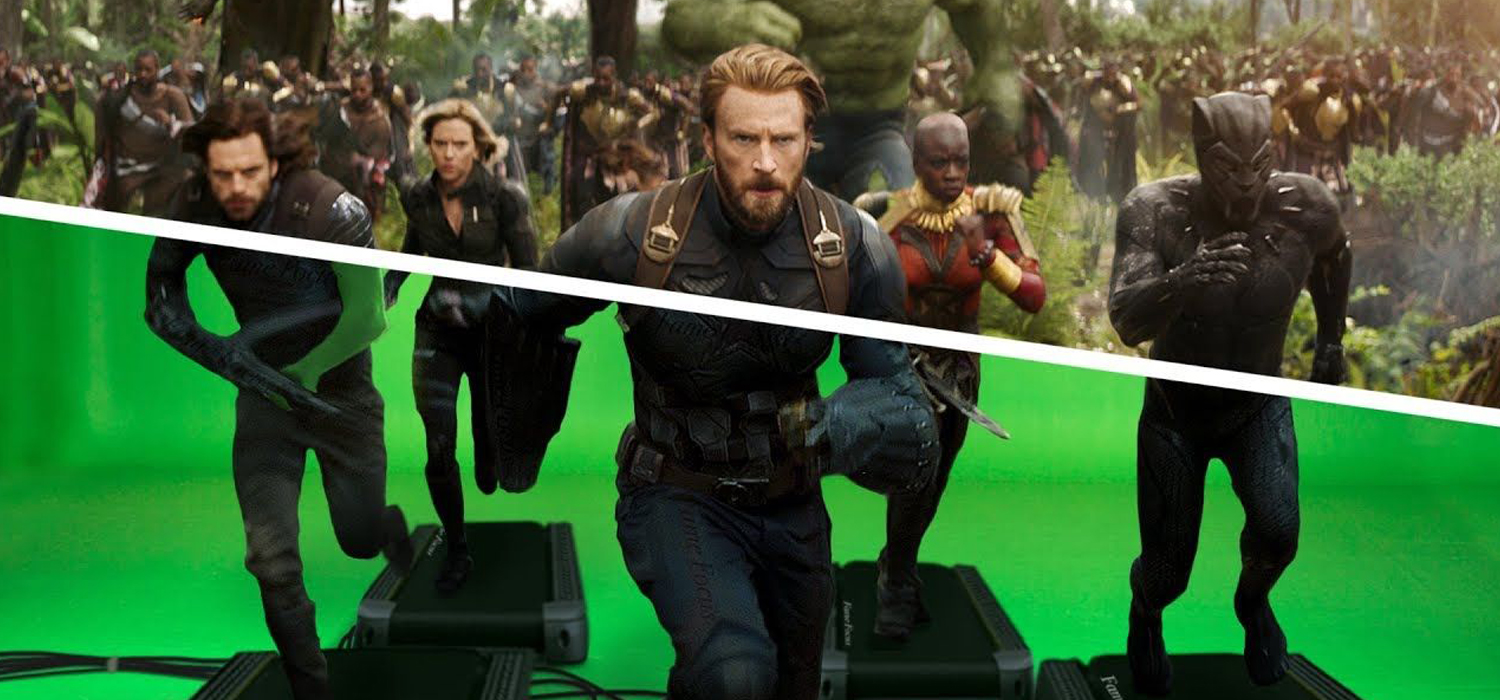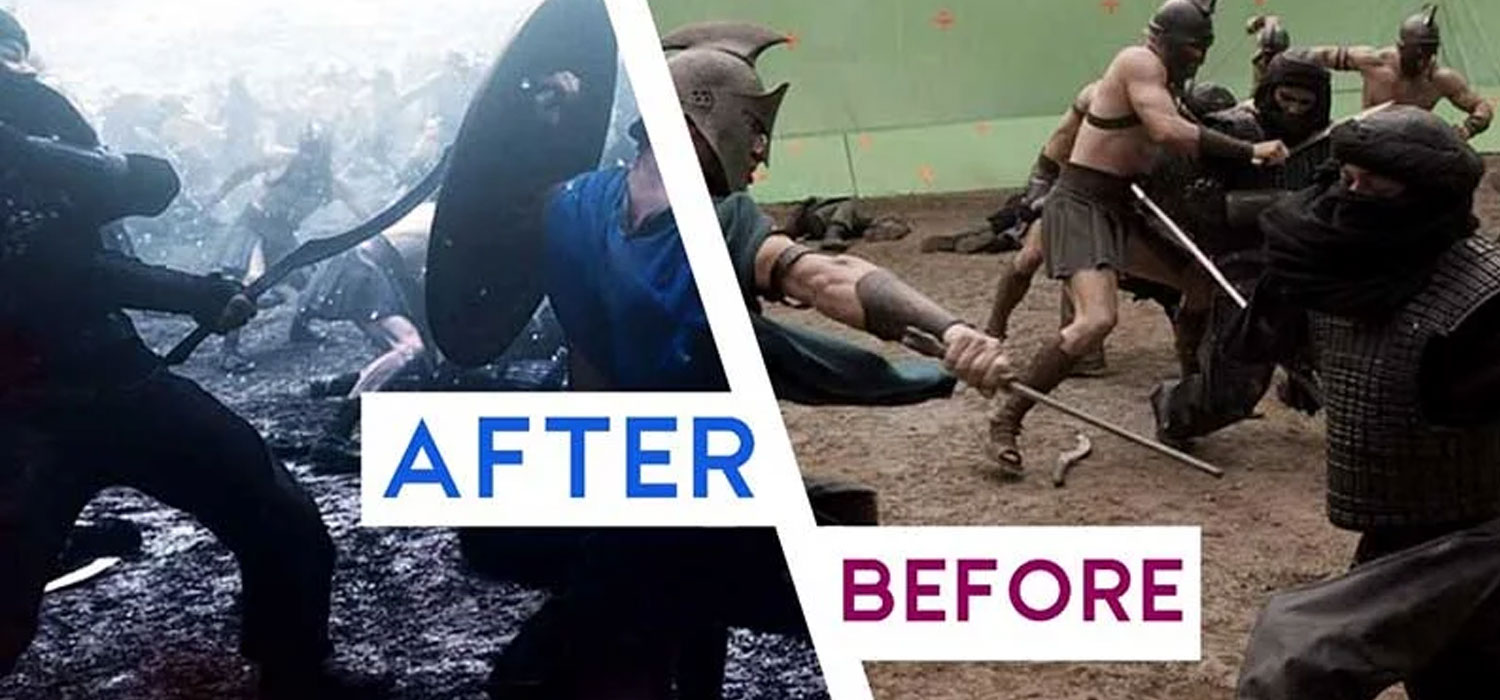VFX institute in Odisha

The VFX pipeline happens to be the various stages of production, which is essential to add visual effects to create a VFX film. The pipeline is prepared to assign respective tasks to the corresponding artists and the departments. This, in turn, helps to understand the roles and responsibilities of each of the artists from the departments and perform accordingly.
In the vertical of visual effects, understanding similar job roles is essential to maintain the VFX workflow. You need to understand every step to work seamlessly and systematically. Despite the role or designation you belong to in the pipeline, it is your responsibility to coordinate, co-operate, and remain in-sync with all the other departments. You need to remember that every department present within visual effects workflow, is interrelated to each other. Therefore, every department constitutes a part of the team you belong to.
Working in a VFX pipeline is equal to working in a team. A single delay from you or the department can hamper the entire workflow of the organization. Therefore, to work in a VFX unit, it is essential to perform carefully, coordinate with other departments, and finish the task within the proposed deadline.
Any in-between delay or mistake, not only slows down the process but also incur unnecessary increase in cost. Therefore, if you are planning to build a career in VFX, you must have a complete and comprehensive idea about how the VFX production pipeline operates.
In this article, we will discuss in details about the workflow of a VFX pipeline and the way it operates. But before jumping into further nitty-gritty, we should learn about the primary classification of an entire film process. A film process can be broadly classified into three significant steps:
- Pre-Production: This is the initial phase of film making, where the preliminary ideas are created. Here, the script and storyboarding is prepared accordingly, to process for the scenes. Needful edits are done. The process is then followed by budget allocation. Specific timelines are determined for each of the tasks. Finally, the financing is secured, and the actors are sourced.
- Production: In this stage, the production unit is composed, and the shooting of the film starts. Needful sets are prepared physically, in studios, outdoor locations, and other landscapes as well. The shots are taken, re-taken, sorted, and finally sent for post-production.
- Post-Production: After the shots are finalized and the shooting is complete, here comes the pivotal importance of a VFX production pipeline. Visual effects are now applied to the raw copy of the shots taken, and a dedicated VFX Team conducts the entire task. The VFX team remains segmented and divided into several departments with assigned tasks. Each of the department remains integrated to work together and stay in-sync.
In the fellow paragraphs, we will discuss in detail about how a VFX pipeline works. Let the discussion begin.
- Story: The foundation of every film work is the story. It forms the backbone of the entire project. The phase of the story belongs to the pre-production stage. It involves the plot, planning out the characters, and the situation or the circumstance they are existing. Brainstorming sessions are held from, where the screenwriters and the final script is prepared.
- Storyboarding and Animatics: In this stage of the VFX pipeline, the artist or a team of artists create the visual representation of the actions within the script. They analyze the motion of the characters within the story and use the necessary drawings to interpret the scenes in the frame shot wise. Although the views are subject to further changes, yet it gives a chance to the team to prepare for further progress.
- Pre-Vis: The stage of pre-vis takes the storyboarding one step further. In this stage of the VFX pipeline, the 3D artists create low poly models and representations of the locations. And the screens are then played out over there. The artists usually work in a close association with the production team to set up the angles of the camera and block out the complex scenes. As a result, it saves a lot of time and reduces unwanted expenditure in the project. Also, the task is escalated real quick as the artists do not have to bother about the matching concept art. They just block out the shapes and compositions.
- Concept Art & Designing: Concept art and design is one of the quintessential steps of the VFX pipeline. Here a team of artist draws fully fleshed out images which represent and design settings, characters, costume, props, color, lighting, and so one. Their task is to create the look and feel of a film and make it more realistic. The mood and charm of the film, along with its meaning and message, is created in this particular phase of art design.
- Layout & Production Design: The goal of the layout and production team is to create the visual representation of how the final set will look like. The layout eventually facilitates the set builders to figure out, and connect with the director and producer to discuss which part of the set is possible to build physically. And then, the remaining portion of the set needs digital assistance to construct. The task is conveyed to the VFX team to channelize through the corresponding VFX pipeline. It provides the VFX team, to figure out the idea about how digital set builds might have to be incorporated.
- R&D: Research & Development is a necessary procedure, and is increasingly important in the entire VFX pipeline. In this stage, the VFX supervisors remain in close association with the directors and figure out how to accomplish individual shots. Simultaneous research is also conducted amongst the VFX artists, technical directors, modelers, and compositors, and proceed accordingly.

R&D is essential for any production and VFX unit. It is the brainstorming sessions and the innovative ideas which assimilate together and makes art different. A piece of film work becomes unique only if the production unit is backed with a robust and cutting edge Research & Development team. The more the research, the more the ideas. And more the ideas confluence, better is the chance to come up with exclusive and exceptional inputs which nobody ever thought before.
- 3D Modeling & Texturing: In movie making, there are several sets of objects which are practically not feasible to create. Also, if the scene includes a specific landscape or component which is extremely expensive to develop, it eventually shoots up the budget beyond the limits. In such situations, 3D modeling & texturing is essential. The director may want to include certain features like buildings, vehicles, weapons, and so on. With the help of 3D modeling, it is easy to escalate the task and create all such components with digital inputs.
3D Modelling is also used to complement something which is shot on the set. The art of 3D modeling & texturing facilitates to create cutting edge and realistic components in the scenes, which otherwise would’ve been impossible or incur a lot of expenses. Therefore, it waives out the effort and time of manual labor and also cuts down the unwanted costs of manual inputs. In the process of the VFX pipeline, this is the quintessential step to create realistic and out of the world designs through cutting edge 3D modeling and texturing techniques.
- Rigging & Animating: Whenever a character needs to be animated, it first should be provided with a virtual shape. And that is the role of the rigging team, in the VFX pipeline. The rigging team builds a digital skeleton at first, for the animators to use. The process involves several steps like adding bones to the frame, calculating and implementing the skin weights, and the addition of muscles to create natural and visually realistic movement.
After the rigging artist is done with the shaping and skeletal implementation of the characters, then the role of the animator comes. The animator uses the custom controls of the rig and brings the style, object, or the prop to life. The animators are also subjected to work with the motion capture data. The motion capture data is essential to achieve a final look at the animated model. Needless to mention, it requires an aptly skilled animator for the same. Autodesk Maya is also used often to create 3D animations.
- FX & Simulation: The FX artist adds simulated elements to a scene in the director’s world. In the views of fire, blast, explosion, smoke, and so on, n FX artist works at any given time. To ensure the natural movement of the colliding FX elements, the artists often work in close association with the animators.
The expertise of the FX & Simulation artists lies in making the scenes of fire, explosion, destruction, etc. realistic and vivid. The audience watching the film must feel that it is happening right in front of their eyes in real, and not generated by a computer.
Today, FX artists form a quintessential part of the VFX pipeline. The work of an FX artist needs countless hours of research in real-life events, references and also involved in making new tools for the team to work seamlessly. Most TV shows, commercials, feature films, web series, and other motion pictures need high-end digital inputs today. And that is the reason, there is a sheer demand for brilliant FX & Simulation artist to create such scenes.
- Lighting & Rendering: The very next step after the work of the animation and effects artist, is rendering & lighting. The 3D elements and all the other visual inputs, thus created, need proper lighting to justify the corresponding scenes. The entire team of the lighting artists strategically imposes the lights all through the stages, including the 3D scenes as well.
The essential components include the color of the light, the intensity, the shadows, and all other inputs, which match up with the original piece created by the animators and effect artists. Each of the sequence frames are then rendered out finally from the camera & angles, and transferred to the compositor artists.
- Compositing: The final step of a VFX pipeline is compositing. The compositor artist takes all the elements of a team and layer them over each other. The team of compositor artist works seamlessly on aspects like color correction, masking, and other essential tricks. This, in turn, facilitates to create that illusion that, all the elements belong together naturally.
The responsibility of a compositor artist includes a series of actions. Some famous examples can is as follows:
- A) Putting the animated characters into a live-action scene
- B) Overlaying the destructions onto a building
- C) Layering the simulated shots of flood or tsunami or other natural calamities over a city street.
There are endless possibilities and scopes in which a compositor artist can work on. Often, they also use sophisticated tools, along with the team, to complete the work within the time along with the entire team. Also, as the compositor artists belong to the terminal end of the pipeline process as a whole, they indeed need to stay integrated with the entire workflow and every department. After all, it is the compositor artists only, who will implement the final inputs. So, a clear idea of the process and departments is quintessential.
The Conclusion
Thus, the article provides a clear and comprehensive idea about how the VFX pipeline works. If you are an aspiring artist and VFX is the genre that attracts you, you are at the right place. Hopefully, the article facilitated you to get a complete three-sixty degree overview of the workflow of the VFX industry & its relevant departments. Re-read it again if needed and take the right step in your career today.